
- 7:00am to 11:00pm– PST
- info@nileinfinitytours.com
Kenya – East Africa
Kenya – East Africa and the Top African Safari Destinations
Kenya is in East Africa with a coastline on the Indian Ocean. It encompasses savannah, Lakeland, the dramatic Great Rift Valley, and mountain highlands. It’s also home to the most abundance of wildlife like lions, elephants, and rhinos. There is nothing quite like the thrill of an African Safari. It’s the stillness of the early morning before the rising sun reaches its peak and casts a heat mirage across the horizon. It’s the sound of wild creatures calling in the night and the sense of peace that comes with being surrounded by untamed wilderness. It’s the excitement of the unexpected. Out in the bush one never knows what new sights and experiences each day will bring. Never to be repeated in its true natural surroundings.
From the capital Nairobi, enjoy a safari visit to the Maasai Mara Reserve, known for its annual wildebeest migrations, and Amboseli National Park, which offers views of Tanzania’s 5,895m Mt. Kilimanjaro.
The national park was established in 1946 about 7 mile south of Nairobi. It offers a worthwhile introduction to the country’s animal and birdlife. For those passing through the capital, the park is an opportunity to get a taste of the wild without ever leaving the city limits. It is fenced on three side, whereas the open southern boundary allows migrating wildlife to move between the park and the adjacent Kitengela plains. Herbivores gather in the park during the dry season. Despite its proximity to the city and its relatively small size, it boasts a large and varied wildlife population, and it is one of Kenya’s most successful rhinoceros’ sanctuaries.
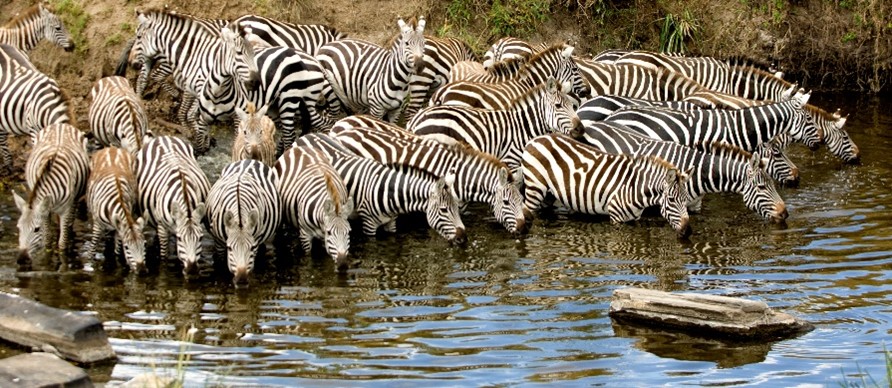
This wonderful reserve is in southwest Kenya and has a vast scenic expanse of gently rolling African, savanna plains the border the Serengeti National Park in Tanzania to the south. It’s famous for its spectacular natural diversity of wildlife and is a well-known safari location in East Africa, offering numerous reasons to visit the wild animal paradise. Your sure to see large numbers of Lions, Cheetah, Elephant, Rhino, African Buffalo, Wildebeest, Giraffe, Zebra and many more animals are to be found in this park, in their natural habitat, unconfined and free to roam the vast wilderness that stretches for miles on end.
The word “Masai” comes from the Maasai tribe, a nomadic group of in habitants of the area and the word “Mara” is their word for ”spotted”. This refers to the ubiquitous flat toped acacia trees, shrubs and bushes that can be seen across the landscape of the reserve.
Chobe National Park lies adjacent to the Okavango Delta in the northwest corner of Botswana. It includes four distinct ecosystems, allowing for an incredibly diverse array of animal and bird life. In particular, the park’s Savuti Marsh offers one of Africa’s highest year-round concentrations of wildlife. Chobe is especially famous for its elephants, with an estimated 120,000 of the great grey animals living within the park’s borders. The best time to visit is during the dry season (April to October), when vast herds of elephant and other animals gather to drink along the banks of the Chobe River. The river also allows for unique boat-based game-viewing and rewarding birding.
Located in the northeast of the country on the Mozambique border, Kruger National Park is the most famous of all South Africa’s many game reserves. As well as the Big Five, the park is home to the vulnerable cheetah, the endangered wild dog and several elusive small cat species. It is a good option for the first-time visitors to Africa, with a wide choice of accommodation options (ranging from basic campsites to luxury lodges). With a well-maintained and easily navigated road system, Kruger is also the ideal self-drive safari destination. Keen birders should plan to visit between October and March. Currently, the park provides a temporary home for mor than 200 migrant bird species.
In eastern Zambia, South Luangwa National Park is known for incredible walking safaris that offer the chance to get up close to the park’s wildlife. It supports healthy herds of antelope and elephant, as well as several large lion prides. River-dwelling species such as hippos and Nile crocodiles thrive here, and more than 400 bird species have been recorded in the regions. Above all, South Luangwa is arguably the best place in Africa to see wild leopards. The optimum time to visit depends on your priorities; birding is best in the rainy season, but game-viewing is best during the dry winter months. Currently, animals congregate on the banks of the Luangwa River in search of precious water.

The Okavango Delta is a unique inland water system created at the point where the Okavango River flows into the Kalahari Desert basin. It sustains an astonishing variety of wildlife and swells and recedes throughout the year according to the annual rains. The most exciting way to explore is on a traditional canoe or mokoro and the best time to visit is during the annual flood. Confusingly, this coincides with the May to September dry season. At this time the Delta’s animals are confined to the islands created by the flood, making them easier to spot. Highlights include great herds of elephant and antelope, hippos, crocodiles, lions, and cheetah.
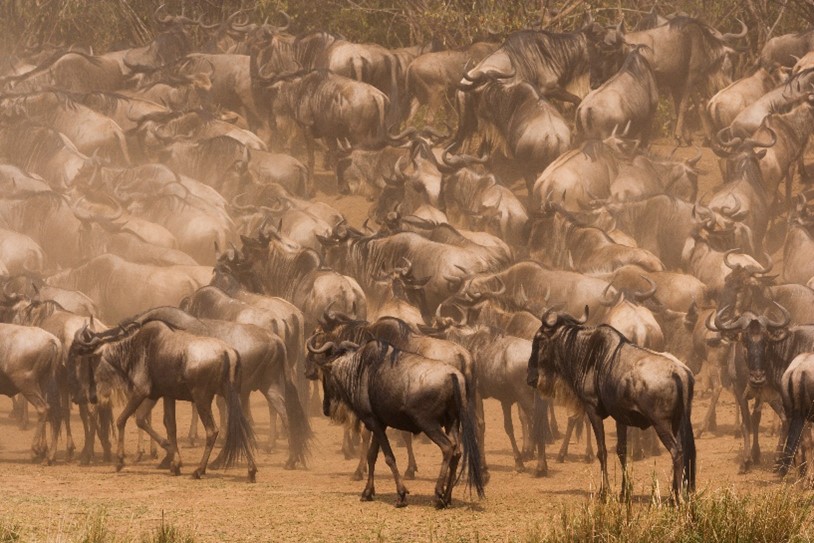
Serengeti National Park is in northern Tanzania and shares a border with Kenya’s Maasai Mara National Reserve. It’s sprawling grasslands make for classic safari panorama dotted with lone acacia trees and grazing herds of zebra and antelope. These herbivores attract high numbers of predators, and the open environment makes this one of the best destinations for watching lions and cheetahs in action. The Serengeti is much larger than the Maasai Mara, and as such often feels less crowded. From November to June, the Serengeti is the main stage for the dramatic Great Migration. Huge herds of zebra and wildebeest gather to graze, mate, and give birth.
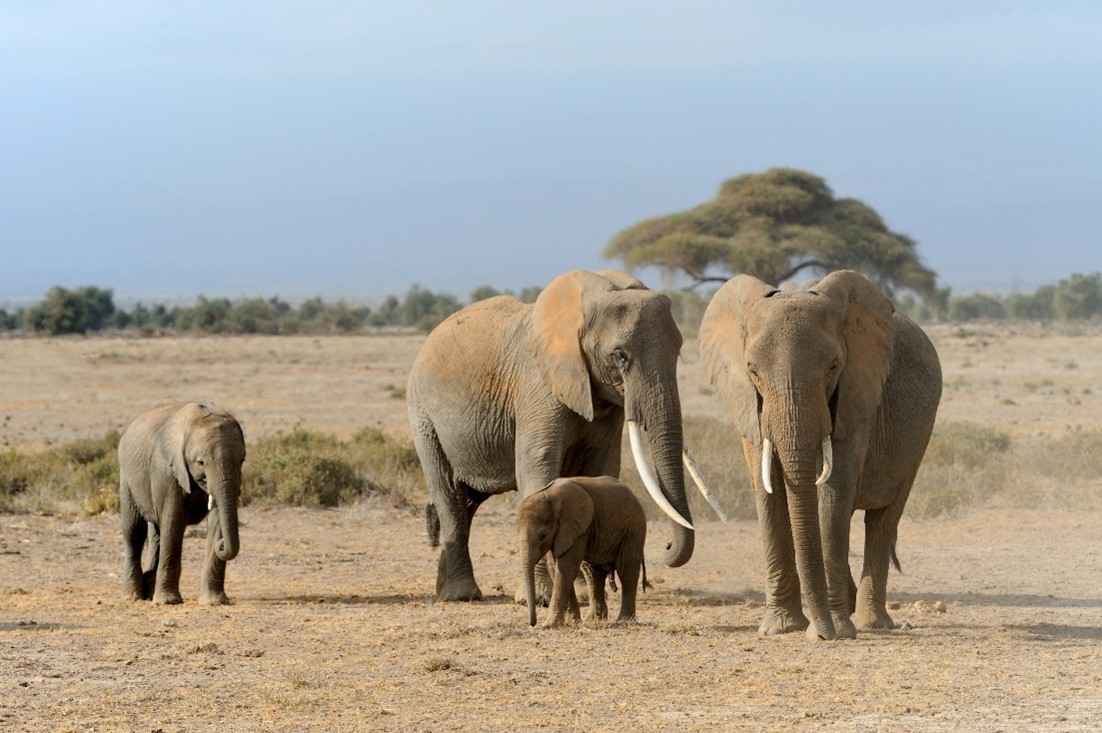
This amazing national park is in southwest Uganda on the edge of the legendary Rift Valley. This dense rainforest is home to nearly half of the world’s population of mountain gorillas – a critically endangered subspecies with just over 1,000 individuals remaining in the wild. Here, you can track the park’s habituated gorilla groups on foot, allowing you to come face-to-face with these fascinating great apes. Trekking permits are compulsory and must be booked well in advance. The forest is also home to chimpanzees, baboons and other mammals including elephant and antelope. Its birdlife is similarly divers, with more than 20 endemic species.
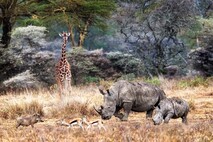
In northern Namibia lies Etosha National Park, a diverse collection of different habitats arranged around a salt pan so large it can be seen from space. This self-drive park is generally arid and many of the animals here are adapted for life in the desert – including the gemsbok, springbok antelopes. Elephants are commonly spotted and you’re likely to see lion, hyena, and cheetah. You won’t find buffalo or hippo, though – it’s simply too dry. Etosha’s main highlight is its population of critically endangered black rhino. These remarkable creatures are best spotted at the floodlit waterholes on the three main camps alongside an array of other nocturnal animals. White rhinos are found here too.
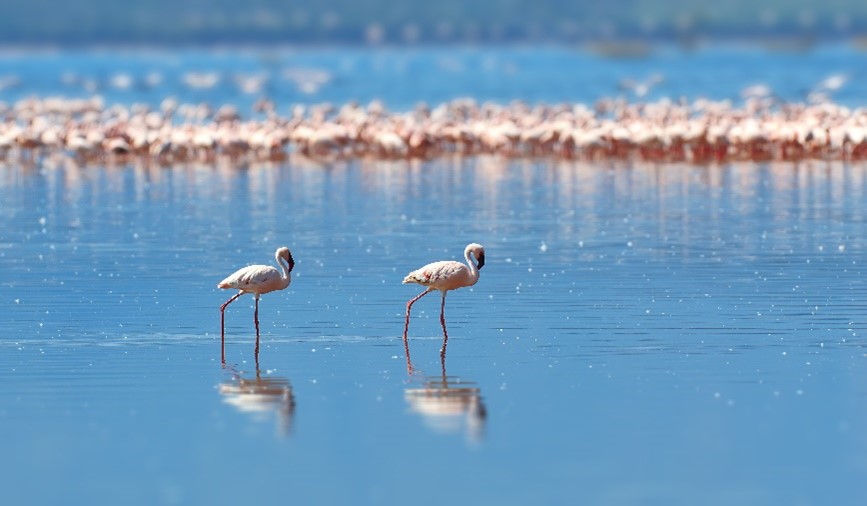
This area in Tanzania is made exceptional by its volcanic crater – the largest un-flooded and unbroken caldera in the world. This vast depression acts as a natural enclosure for countless wildlife species, including the Big Five. Highlights range from a healthy population of black rhino to some of the largest tusker elephants on the continent. The lake at the center of the crater also hosts huge flocks of rose-colored flamingos, while Maasai tribespeople still live within the conservation area. Another unmissable attraction is the Olduvai Gorge, an important paleoanthropological site that has contributed hugely to our understanding of human evolution.
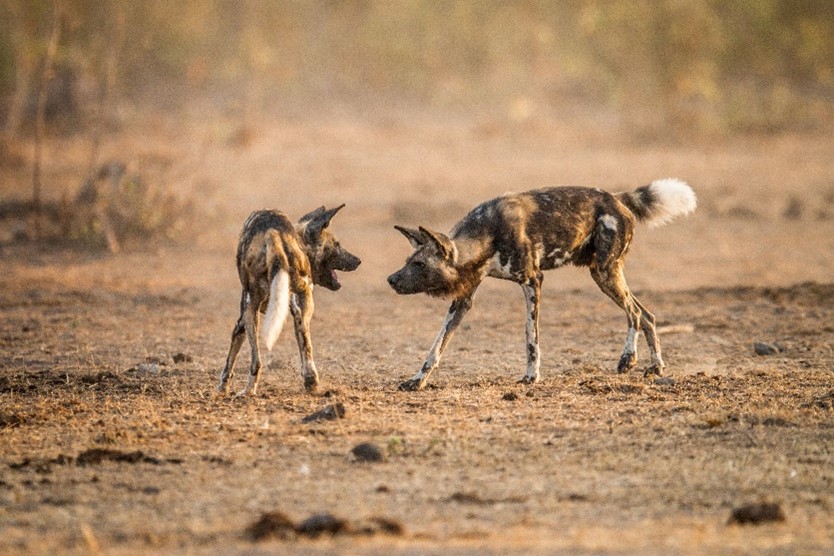
Zimbabwe’s Hwange National Park covers some 5,655 square miles/14,650 square kilometers of land in the west of the country. It is possibly the lease crowded of Southern Africa’s major safari destinations, allowing for a heightened sense of adventure and discovery. Hwange’s elephant population is legendary, as are its large herds of buffalo. Lions are often spotted here too. Above all, the park is one the best places in the world to see the elusive African wild dog, thanks to the presence of several establish packs.

